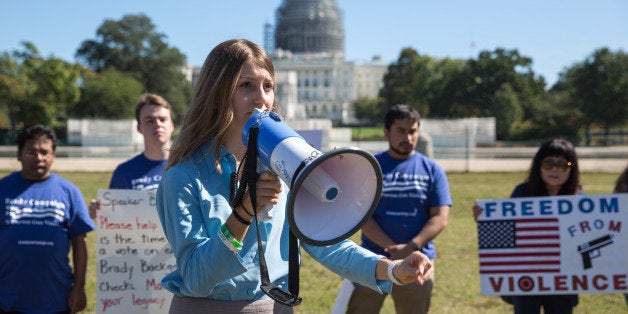
Firearms have long been championed as "the great equalizer" for their ability to remove physical size from the self-defense equation. In reality however, mass shootings, police brutality, and firearm related accidents serve as daily reminders that a gun does more harm than good.
Yet in the wake of repeated violence, pro-gun rights advocates continue to preach that the ubiquitous distribution of guns is the most effective means of defense against assailants. After the Sandy Hook Elementary School shooting in 2012, which claimed the lives of 26 people, mostly children, Executive Vice President of the NRA Wayne LaPierre made the organization's position on gun control painfully clear, "The only thing that stops a bad guy with a gun is with a good guy with a gun."
But under further scrutiny and a little research, this argument is groundless.
For example, making the distinction between a good and bad person has not only proven to be almost impossible, but is very idealistic considering the ease at which almost anyone can acquire a firearm under the current system. Since the inception of the Brady Handgun Violence Prevention Act on March 1, 1994 through December 31, 2012, only 1.6 percent of the nearly 148 million applications for firearm transfers or permits were denied, meaning that almost anyone without a prior felony conviction or fugitive status can purchase a weapon legally.
And unfortunately, these legally purchased guns end up being responsible for innocent civilian deaths as was the case in the recent Umpqua Community College shooting and many others. The lack of stringency coupled with the difficulty of accurately identifying potential threats is in many instances responsible for providing the tools used for committing terrible crimes.
The threat of having a legally acquired weapon falling into the wrong hands doesn't just stop there. A 2000 study on firearm storage patterns found that in homes with both children and firearms, 55 percent had one or more firearms stored in an unlocked place. This alarming lack of concern for keeping firearms under lock and key directly leads to negative consequences.
A study by Safe School Initiative found that 68 percent of school attackers acquired legal weapons from either their own home or a relative. Moreover, data from the U.S. Department of Justice from 2005-2010 shows that on average, more legally purchased guns were stolen during burglaries annually, 232,400, than applications for guns were denied, 142,167.
The issue of legally purchased firearms often ending up in the wrong place aside, a study by the New England Journal of Medicine found that the notion of guns being used for protection in the home is also bogus. The study concluded that there was little evidence to suggest the protective effect of keeping a gun in your home, even in the small subset that involved forced entry, because the vast majority, 76.7 percent, of homicide victims in their home were killed by a relative or someone known to them and that, "efforts to increase home security have largely focused on preventing unwanted entry, but the greatest threat to the lives of household members appears to come from within."
This threat from within seems to also include protection from ourselves as data from the CDC reveals that in 2013, Americans were about twice as likely to take his/her life by firearm than commit a homicide with a gun. Therefore, while typically considered a defensive tool, firearms aren't often used for protection against outside forces.
Even if a firearm is in the correct hands, they can escalate a seemingly innocuous situation into something deadly. This occurs frequently in law enforcement. Take for example the recent cases of Samuel Dubose, 17-year-old Deven Guilford, and David Kassick, all of whom were unarmed but shot and killed by police this year after being stopped in traffic. While it's true that each victim exhibited some form of resistance, the bottom line is that they were all unarmed and the police officer's own weapon was responsible for accelerating the situation to the point of an innocent person's death. Guns intended for protection can have just as unfair and tragic consequences as those that aren't.
While repeated acts of violence have garnered support in the form of prayer, it has not translated into legislation, which has proven to be the most effective method of preventing these tragedies.
For example, following the Dunblane school massacre in Scotland on March 3, 1996, which claimed the lives of 16 children and one teacher, the UK banned the private use of all handguns, even for most police officers. Not surprisingly, this universal respect for the power of the firearm has resulted in a far lower number of gun-related deaths and gun-related homicides than the United States.
One doesn't even need to leave the United States to see the effect of more potent legislation. Based on a state by state comparison, states with stricter gun laws yield fewer deaths. It's an obviously clear correlation. Especially considering that handguns account for far more of homicides each year than any other weapon type, making them less available would have an immediate impact.
The simple fact is that we can do something about gun violence and the evidence is overwhelming. Our system does not keep the "bad guys" from possessing guns, they do not make a home safer, they can turn a harmless situation into something fatal, and proper legislation has been proven to reduce violence. We as Americans need to turn the conversation inward and seriously weigh the consequences of our second amendment rights against the greater good. Otherwise we are willingly putting ourselves and our loved ones at risk.